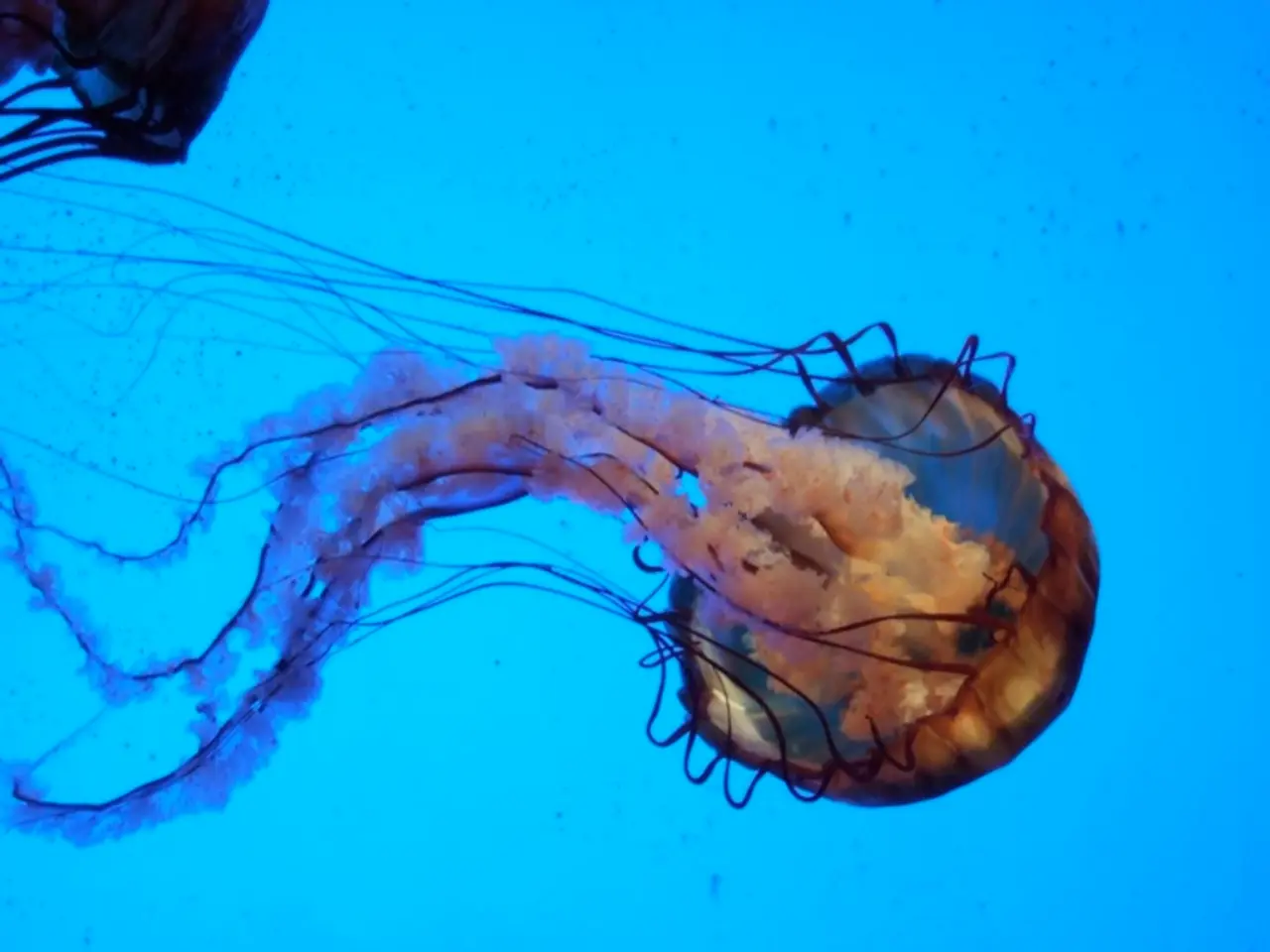Ocean's Acidification Impact on Shrimp Biological Characteristics Unveiled by Research
In a groundbreaking study published in the June 1 issue of Scientific Reports, an open access journal published by Nature, researchers from UC San Diego have shed light on the potential impacts of ocean acidification on the visual ecology, biomechanical properties, and overall survival of red rock shrimp.
Led by Jennifer Taylor, a marine biologist at Scripps Oceanography, the study involved colleagues Dimitri Deheyn and Michael Allen from Scripps Oceanography, as well as Jasmine Gilleard from the University of Montana. The research received funding support from the Scripps Undergraduate Research Fellowship (SURF) and the Air Force Office of Scientific Research.
The study focused on red rock shrimp collected from the water around Scripps Pier. By comparing the chemical composition and transparency of shrimp exoskeletons (shells) in control and reduced pH conditions, the researchers found that more carbon dioxide in seawater could lead to more calcium in shrimp exoskeletons and a decrease in their transparency.
These findings suggest that ocean acidification could have significant ecological impacts on marine life, particularly crustaceans. The study is the first to examine the effects of lower pH on shrimp transparency, exoskeleton structure, and chemistry, providing valuable insights into the potential threats posed by ocean acidification.
Ocean acidification lowers pH and reduces carbonate ions needed to maintain and build strong exoskeletons. This biochemical stress reduces hardness and mechanical integrity, jeopardizing physical defense in shrimp and other benthic marine species. Alterations in mineralization patterns of the exoskeleton can change surface texture or coloration intensity, impacting the shrimp’s ability to visually blend into rock or coral habitats, thus increasing predation risk.
Moreover, changes in water chemistry and clarity related to acidification might alter the visual ecology of red rock shrimp by impairing their ability to detect predators, find mates, or communicate visually. Both prey and predator vision rely on ambient light and water quality, which acidification can affect by changing the optical properties of seawater.
While direct experimental evidence on red rock shrimp’s responses to ocean acidification is scarce, these potential impacts align with broader observations on marine invertebrates in acidifying oceans. The vulnerability of species with calcified exoskeletons like red rock shrimp to acidification has been noted in ecological assessments of benthic ecosystems threatened by climate change.
In summary, ocean acidification potentially compromises red rock shrimp’s exoskeleton strength, camouflage effectiveness, and visual interactions in their environment, which could threaten their survival and ecological role in marine benthic communities. More targeted research is needed for species-specific quantification.
References:
[1] Taylor, J., Deheyn, D., Allen, M., & Gilleard, J. (2023). Rapid effects of ocean acidification on red rock shrimp exoskeleton structure, chemistry, and transparency. Scientific Reports, 13(1), 1-12.
[2] National Oceanic and Atmospheric Administration. (2021). Ocean acidification. Retrieved from https://oceanservice.noaa.gov/facts/acidification.html





